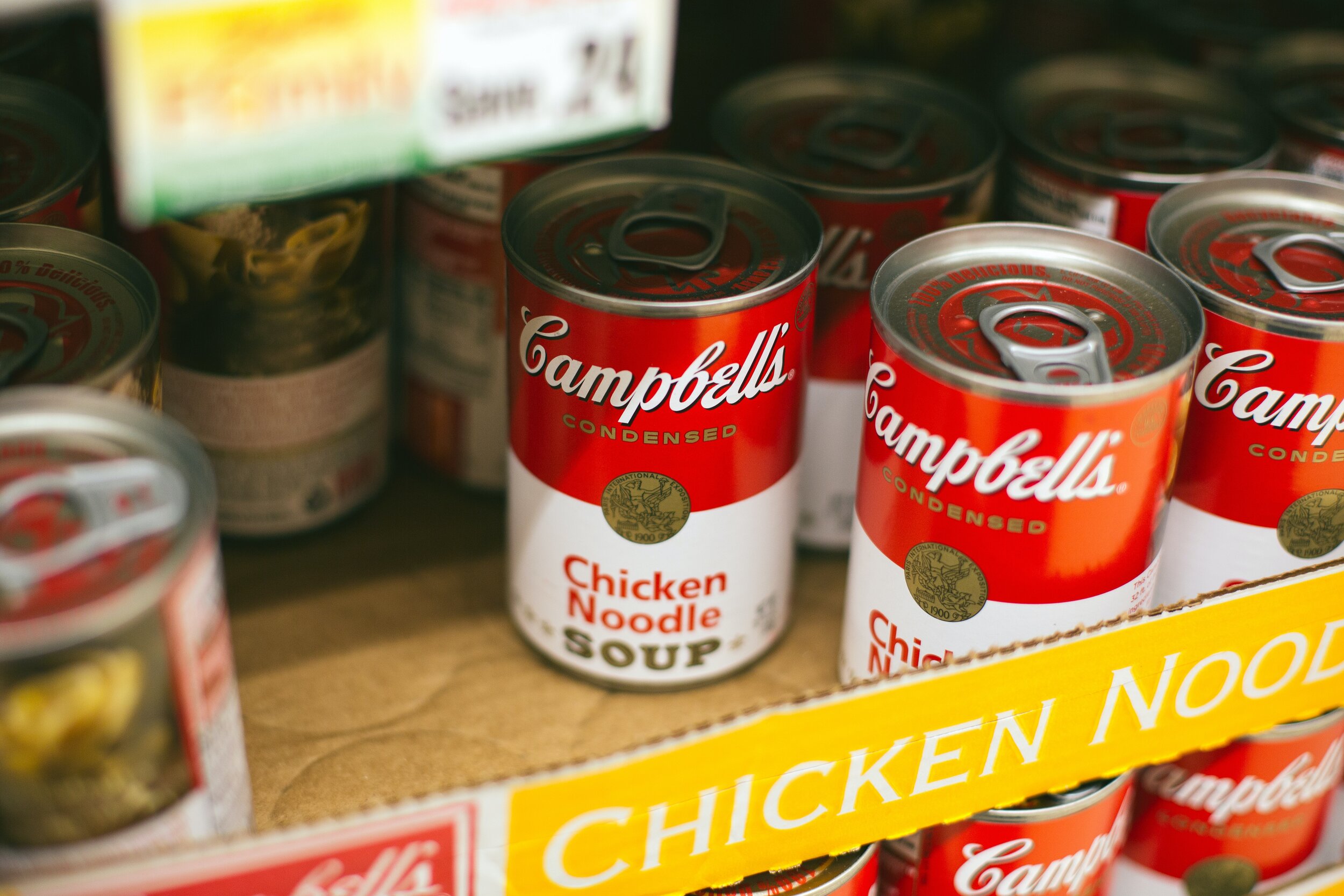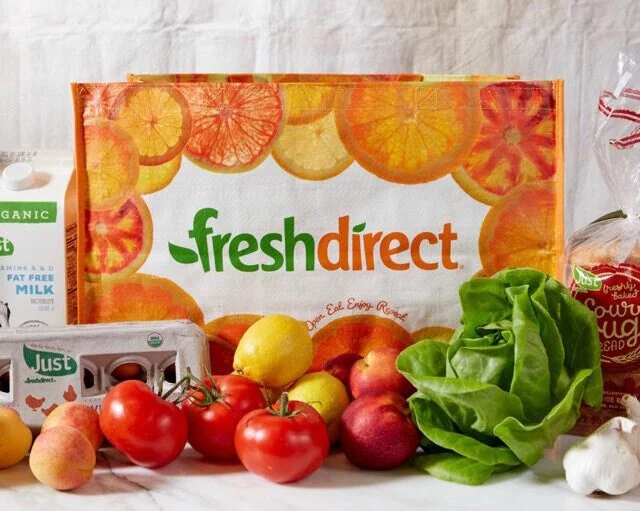The State of CPG Brands: Getting Creative As In-Store Shopping Decreases
How do you imitate the convenience of browsing vast aisles of inventory without a physical presence? Or the experience of seeing, feeling, and smelling various products to make a purchasing decision?
Due to the coronavirus pandemic, these are questions brands have had to navigate over the past couple of months. With in-store shopping heavily decreased, they have had to merchandise and market the “virtual shelf.” CPG companies have been fundamentally frozen, waiting for a sign that it’s okay to push people to physical stores.
On top of that, brands and retailers have been forced to rethink the way their consumers are able to shop — from contactless solutions like curbside pickup, to a hygienically modified version of the legacy in-store experience, to upping the focus on e-commerce.
In this uncertain retail environment brought on by COVID-19, let’s explore what brands — specifically CPGs — have done to stay afloat.
The Challenge Faced By CPGs
People have been hoarding and stockpiling groceries more than ever during the coronavirus pandemic. So why are CPGs struggling?
Grocery stores may still be open to put products in the hands of their consumers. But CPG manufacturers — who are heavily reliant on in-store elements like food sampling — have been struggling to find alternative marketing strategies.
Believe it or not, in-store sampling is incredibly successful in converting shoppers into customers. Food sampling drives sales because it lowers the risk involved in buying an unfamiliar product. What’s more, sampling is a big part of the shopping experience at grocers like Costo and Sam’s Club.
For some CPG brands, drive-thru food sampling has been the solution.
The co-founder of chickpea-based cereal startup Three Wishes set up a drive-thru sampling experience in his very own driveway. The stunt didn’t result in as many samples being distributed as an in-store promotion, but it did attract a significant amount of media attention.
Even established brands have adjusted their strategies as well. For instance, Coca-Cola opted to insert its energy drinks into online grocery pick-up orders and donate them to frontline workers.
Traditional CPG products get the upper hand
Some products are experiencing an expected bump during a pandemic, like toilet paper, disinfectant wipes, and hand sanitizer. But some other surprising categories are also seeing a resurgence — like older, more established brands that online consumers will resort to.
Campbell’s Soup, for example, has experienced a rise in demand across its portfolio in the latest quarter, ending April 26. Why?
Consumers have gravitated to Campbell’s products due to the comfort they bring.
“Think of tomato soup paired with grilled cheese or family spaghetti night with Prego pasta sauce or the fun of sharing SpaghettiOs with your kids. All of them have seen significant consumption gains during the crisis,” said CEO Mark Clouse.
The J.M. Smucker Company, the company behind Folgers Coffee and Jif Peanut Butter, reported that its net sales climbed to $2.1 billion for the quarter ending April 30. Similarly, the CEO commented that these behaviors are a result of the trust consumers have in established brands.
“Consumers turned to trusted products to stock their kitchens as stay-at-home orders were implemented across North America,” said Mark Smucker, president and CEO of the J.M. Smucker Company.
Because consumers have been opting for value and familiarity, traditional beer brands — including Miller Lite, Coors Light, and Bud Light — have also found their way back into Americans’ homes.
Finally, laundry detergents, dish soaps, and hygiene products are seeing an expected increase as well. P&G, the CPG giant behind Tide laundry detergent, Bounty paper towels, and Swiffer wipes, has seen a sudden sales increase across its portfolio of brands. Other in-demand items include Dawn and Cascade dish detergent, Crest toothpaste, and Gillette blades and razors.
Shifting advertising to consumer activations
As restaurants and bars faced closures, some food and beverage brands shifted their advertising strategies to help strengthen relationships with their consumers.
Consider Coca-Cola, for instance. The brand turned its focus from out-of-home, billboards, and television ad spots to smaller digital and streaming options to connect with people looking for entertainment at home. Even as the world slowly begins to reopen, Coca-Cola plans to move forward with similar digital efforts.
But Coca-Cola isn’t the only brand that has rethought its strategy amidst lockdown orders. Chief rival PepsiCo has opted for consumer activations over its traditional ad revenues. Its Frito-Lay's Tostitos brand recently sponsored a live streamed nacho competition between actor Bill Murray and Food Network personality Guy Fieri. Other companies have shifted focus to virtual event marketing and live streaming in a similar fashion.
Driving a focus on purpose
When the coronavirus pandemic began to sweep the nation, CPG brands were forced to rethink what their messaging and creative look like.
In a time like this, elements like hygiene, health and wellness, and human connection prevail. Many brands took to their brand purpose, mission, and social responsibility to guide their response strategies.
CPG giants like Procter & Gamble and Unilever have run donation-driven efforts and viral social media activations to offset the pandemic’s financial impacts. P&G has also been promoting local broadcasts and streams in disadvantaged communities. And Unilever's brand Dove, who is known for its body positive Real Beauty campaign, released new ads paying tribute to health care workers on the front lines.
Another example is beverage giant Coca-Cola, who has dedicated its Twitter feed to retweeting information from its charitable partners, such as Feeding America and American Red Cross.
In its new eight-episode video series, “The Road to a Vaccine,” Johnson & Johnson will be interviewing leading scientists and researchers, healthcare workers on the front lines, and public health experts around the world working collaboratively to bring an end to the deadly pandemic.
By pivoting their marketing strategies to inform rather than sell, these brands — among many others — are making memorable impressions on consumers.
Maintain and forge cross-category partnerships
“Where there’s disruption, there are opportunities,” said Celsius Holdings CEO John Fiedly.
Before the coronavirus pandemic, energy drink manufacturer Celsius had benefited majorly from gym and fitness club exposure. With gyms facing closures, Celsius knew it needed to shift its focus.
The brand launched its energy drinks in more than 1,500 Walmart stores in its fiscal quarter ended March 31 — a move that increased its revenue by 70% in North America.
Before the pandemic imposed social distancing, the brand was already taking measures to connect with their audience digitally. Celsius became the official energy drink sponsor of Barry's Bootcamp live, at-home series on Instagram, a partnership that helped gain it loads of exposure in the health and fitness community. It also launched the virtual workout platform Sweat With Celsius on their Instagram account.
Another strategic move was forging a marketing relationship with Instacart last September. Since the coronavirus crisis has exacerbated the growth in platforms like Instacart, Celsius was majorly ahead of the curve. In fact, Instacart’s app downloads increased by nearly 300% from February to March alone.
Other brands have also made use of Instacart as a marketing partner, including Procter & Gamble, Unilever and PepsiCo. While Instacart's personalized search results show featured products, its marketplace ads include banners, coupons, and delivery promotions. These paid search placements and banners are key for getting consumers to add your brand to their virtual shopping carts.
Transitioning to digital and DTC
Even before the pandemic, the most profound behavioral change in commerce was the shift to digital shopping.
Product categories like books and consumer electronics had already been significantly disrupted by digital over the past two decades, while those like apparel made the transition earlier on. E-commerce currently accounts for 11.1% of total U.S. retail sales, and is expected to rise to 14% by 2021.
But what about grocery, one of the largest consumer categories?
Its transition to digital has been slow to follow other categories, with only 4% of grocery sales in the United States coming from online in 2019. Due to the coronavirus pandemic, more and more people are using the web to purchase groceries. The average daily downloads for digital grocery apps like FreshDirect Instacart, Walmart Grocery, and Shipt have surged since February.
CPG and grocery are challenging categories to migrate in an online environment — its product assortment is often heavy, low-priced, bulky, or perishable. However, many CPGs have successfully adopted a millennial-friendly direct-to-consumer (DTC) business model to help meet consumers’ shifting habits.
Legacy brands and manufacturers that sell directly have a great opportunity to ignite growth and reach consumers digitally. And it's the growth of e-commerce that will help offset stagnant in-store sales growth.
Selling direct is also crucial for combatting increased competition from retail partners offering their own DTC private-label brands. For instance, Costco’s Kirkland Signature brand generated $40 billion in sales — more than CPG giants Campbell Soup, Kellogg, and Hershey combined.
Take a look at how some CPG giants have tapped into the DTC landscape:
PepsiCo launched two direct-to-consumer websites: PantryShop.com and Snacks.com. Through these websites, consumers can order a variety of PepsiCo’s food and beverage brands like Quaker, Gatorade, Sun Chips and Tropicana. Products are grouped in categories such as "Rise & Shine," "Snacking," and "Workout & Recovery." According to Pepsi, bundles are “designed to meet consumers’ ‘new normal,'” such as working and exercising at home and homeschooling.
Kraft Heinz created its first-ever DTC business line, Heinz to Home, in April. This service enables consumers to purchase product ‘bundles’ of shelf-stable items like beans, spaghetti, condiments, and soup for home deliveries in the UK.
As the trend evolves, it will be crucial for CPG brands to embrace this way of business while maintaining relationships with retailers and other vendors.
Takeaways
Grocery sales are booming, but buying behaviors have greatly changed. People are leaning on trusted, familiar brands for their consumer goods, and they’re no longer scouring physical store shelves in search of new products. For this reason, CPG brands have been challenged to meet consumers where they are — online — and scale their marketing efforts to address their changing needs.
However uncertain the CPG landscape is right now, there’s no doubt that consumer goods are necessary. By consulting their purposes and shifting to alternative marketing strategies, CPG brands have been able to stay afloat amidst the coronavirus pandemic.





